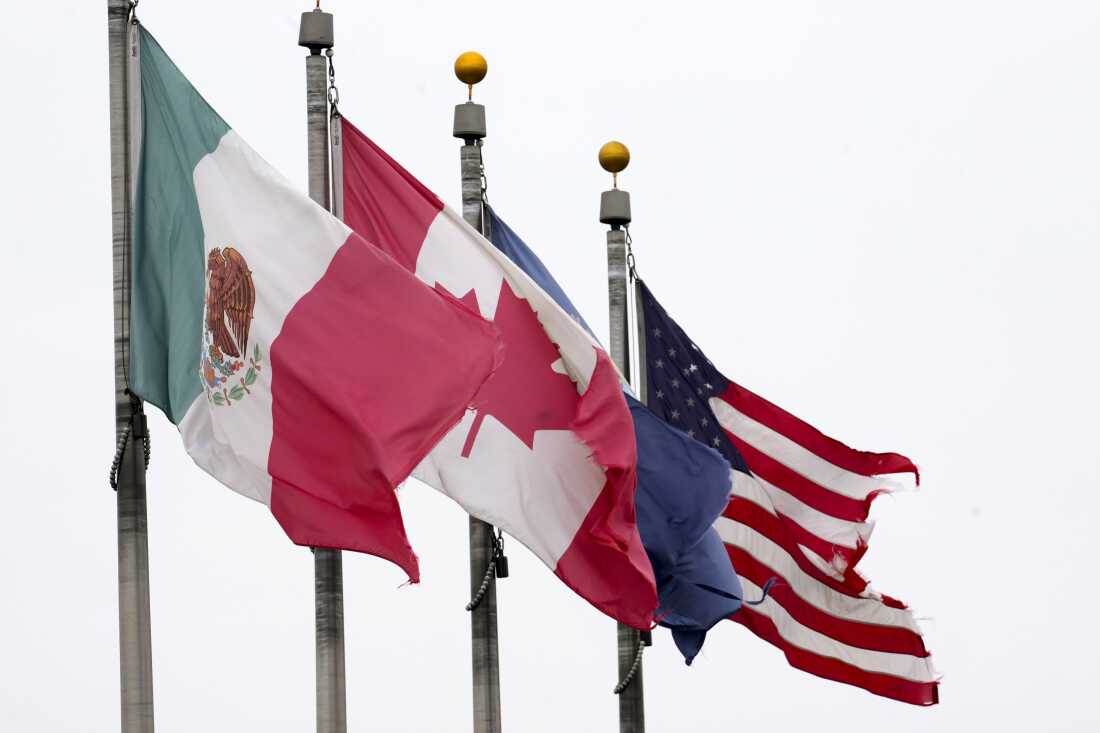
The flags of Mexico, Canada and the United States are shown near the Ambassador Bridge, Monday, Feb. 3, 2025, in Detroit. (AP Photo/Paul Sancya)
By: Shashank Murali
Staff-Writer
Calling it “Reshaping the U.S trade dynamics,” President Trump executed a notable tariff measure on Feb. 1.
Executive orders signed by President Trump imposed a 25% tariff on all imports from Canada and Mexico and an additional 10% tariff on imports from China. Canada’s energy resources were liable to a lower 10% tariff.
According to the Trump administration, this comes as a reaction against illegal immigration and drug flow into the nation. The government provided a brief stating that reciprocal trade policies are necessary to match American tariffs with those of other nations.
Driven mostly by his “America First” goal, which sought to lower the U.S. trade imbalance and revive American industry, Trump’s tariff program in China was one of the main targets of these tariffs; Trump said that country was using intellectual property theft, currency manipulation and overproduction, violating fair trade policies. His government put tariffs on Chinese goods valued at billions of dollars, therefore igniting a trade war between the two countries.
Trump’s more general objectives were to urge China to adopt different economic policies and encourage American businesses to bring production back home. He also sought to convey a message that the United States would not accept trade imbalances that, in his opinion, harmed American businesses and workers.
This has resulted in a trade war once more, with China holding 2018 in reference as Trump’s government decided to launch tariffs on Chinese goods alone starting with a 25% charge on $50 billion worth of Chinese goods. Further levies totalling $100 billion worth of imports followed from this.
Since Canada and Mexico are members of the United States-Mexico-Canada Agreement, Canada has lately expressed dismay over tariffs. It was previously called NAFTA, North American Free Trade Agreement, and was in effect from 1994 to 2020. Then on July 1, 2020, it was rebranded as the USMCA. The main objective of the agreement was to lower the tariff on imports and exports inside the continent.
On Feb. 10, Trump also announced that steel and aluminum tariffs would be reinstated at 25% effective March 1, leading to questions about how construction, transportation, packaging, machinery and other industries will be affected, as the U.S. relies on imports for 26% of our steel and 44% of our aluminum.
Long-term effects of these tariff policies on the U.S. economy and foreign trade relations remain a topic of continuous study and discussion as they change.